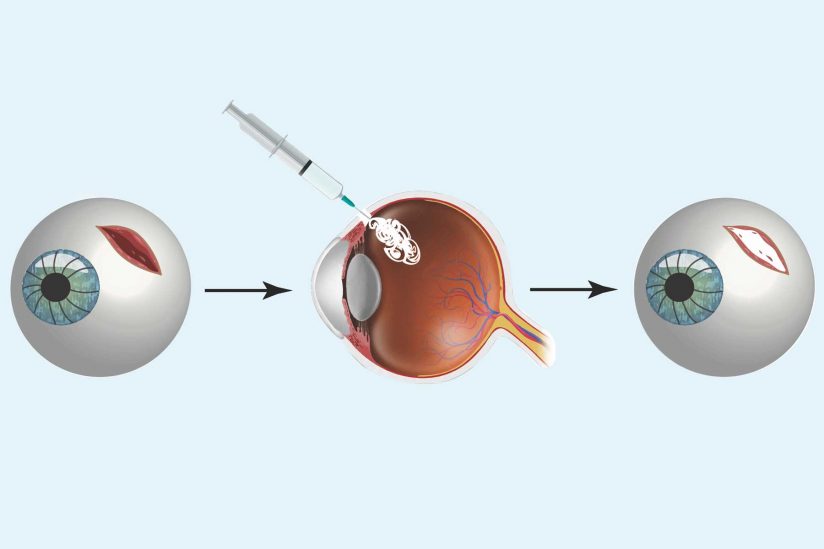Portable glue for eye emergencies
University of Southern California (USC) scientists have developed an on-the-spot, temperature-sensitive hydrogel and special syringe that can quickly seal eye injuries on the battlefield or in emergency situations.
The reversible, temperature-sensitive temporary seal changes from a fluid to a super-strong semi-solid when applied to the eye and can be removed by adding cool water once the patient reaches hospital.
“If you look at historical data over the last several decades, the rate of war-related ocular injuries has steadily increased from a fraction of a percent to as high as 10-15%. Some of that can be attributed to changes in warfare, especially with the use of improvised explosive devices,” said lead researcher John Whalen, assistant professor of research ophthalmology at the USC Roski Eye Institute and member of the USC Institute for Biomedical Therapeutics. “When the US Department of Defense asked the scientific community to develop novel approaches to treating ocular injuries, we immediately thought of an advanced material we had previously worked with as a possible adhesive for a retinal implant.”
The material the group was working with for retinal implants was a hydrogel called PNIPAM, poly(N-isopropylacrylamide), which had a unique attribute that made it a natural fit, said Whalen.
The research team has also developed a special syringe for the hydrogel that would be easy to use on the front lines and capable of quickly cooling the hydrogel before application. The syringe has a cooling chamber filled with calcium ammonium nitrate crystals — the type used in instant ice-cold packs. By adding water to the chamber, the crystals activate and cool the hydrogel to operating temperatures within 30 seconds.
“We were able to optimise the delivery device so that it not only rapidly cools the hydrogel but also holds it at that temperature, giving users a 10-minute window to fill penetrations in the eye,” said Whalen. “It’s very simple to use — almost like caulking a bathroom seal.”
Whalen envisions applications for the hydrogel that go beyond the battlefield. “First responders at a mass casualty incident could deploy the hydrogel while patients wait for their injuries to be completely repaired by an ocular surgeon in appropriate microsurgical facilities. It could also be useful in ERs in rural areas where there isn’t an eye centre with such capabilities nearby. It may even have potential for temporarily treating gunshot wounds.”
To establish the material’s efficacy, a rabbit model was used. Results showed that when applied to eyes with penetrating injuries, the hydrogel improved pressure within the eye, which may be critical for preventing retinal detachment that can ultimately lead to vision loss. There also was no evidence of inflammation or infection for up to four weeks of use.
The researchers hope to initiate clinical safety testing in humans in 2019.



























